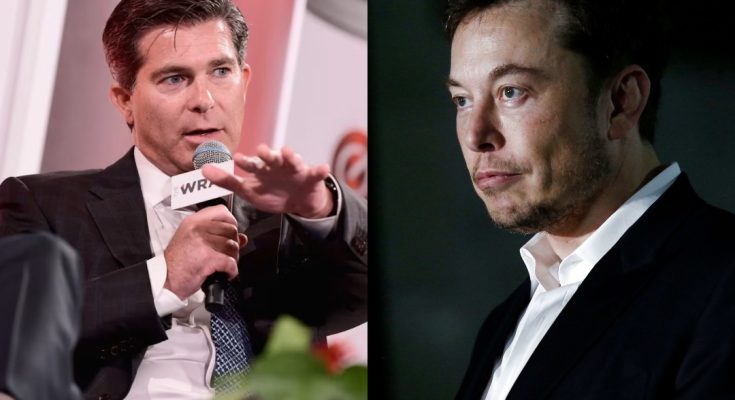In an extraordinary moment of reckoning for one of the world’s most influential CEOs, a wave of investor outrage is sweeping through Tesla as shareholders openly demand the removal of Elon Musk from the company’s top leadership role. The calls for Musk’s ousting erupted following the electric carmaker’s devastating first-quarter earnings report, which revealed a 71 percent drop in profit — a staggering plunge from $1.39 billion in Q1 2024 to just $409 million in the same period this year.The dramatic financial slump, paired with what many see as Musk’s increasingly erratic decision-making and divided attention, has triggered what could become the most serious challenge to his authority since taking over the company.The anger was palpable as investors digested not only the profit collapse but also Musk’s continued entanglement with the U.S. government through his role leading the Department of Government Efficiency (DOGE) under President Donald Trump’s administration. Musk, in a follow-up call with analysts, claimed that he would now begin spending more time at Tesla, stating that “the major work of establishing DOGE is done” and promising to scale back his government involvement to just “a day or two per week” starting in May.But to many investors, that vow was far too little and far too late. For them, the damage has already been done, with Musk perceived as prioritizing political theater over operational excellence.Dan Ives of Wedbush Securities framed Musk’s shift in tone as a “step in the right direction,” but others were far more critical. Some prominent investors argue that Tesla has been operating on autopilot for months while Musk chases political and futuristic ambitions — from AI and space to robotaxis and government reforms — often at the cost of shareholder value and strategic clarity. They point to a troubling lack of focus, inconsistent messaging, and an alarming tendency to shift goalposts.This mounting discontent is compounded by Musk’s insistence on prioritizing high-risk, long-term projects like the autonomous “Cybercab” robotaxi, despite warnings from internal Tesla analysts that the venture may never turn a profit. These internal assessments, first reported by The Information, caution that regulatory roadblocks, international legal challenges, and lukewarm demand could doom the robotaxi initiative before it gains traction.Analysts within the company have flagged the decision to pursue the Cybercab over the long-anticipated $25,000 Model 2 electric vehicle as deeply flawed. According to sources, the Model 2 would have been more marketable in emerging markets like Vietnam, India, and Latin America — regions where the appetite for affordable EVs from a major brand like Tesla remains high.Yet Musk has reportedly refused to allocate resources to both programs simultaneously, opting to suspend the Model 2 entirely.The fallout from these strategic miscalculations is now manifesting in Tesla’s plummeting stock price, which has fallen more than 40 percent since the beginning of 2025. Although shares rose slightly — by 5 percent — in after-hours trading following Musk’s announcement to focus more on Tesla, the damage may already be done.Shareholders are losing confidence not only in Tesla’s roadmap but in Musk’s ability to remain grounded in reality and responsive to market signals.The phrase most often used among disillusioned investors in recent days is “delusional, detached, and directionless” — a searing characterization that is increasingly making its way into public commentary. Critics argue that Musk has become so preoccupied with futuristic narratives and ideological battles that he has lost sight of Tesla’s fundamental business objectives.The once-revered tech visionary now faces accusations of being more focused on speeches about artificial intelligence, appearances in political forums, and speculative innovations than ensuring the stability of Tesla’s core operations.This perception has been exacerbated by Musk’s controversial handling of DOGE, a government task force meant to streamline public sector operations. Although Musk touts its achievements in reducing waste and fraud, DOGE has also been associated with aggressive job cuts and polarizing policies, which have made him a divisive figure far beyond the boardroom.Protests targeting Musk’s leadership have erupted outside Tesla factories, and vandalism incidents involving Tesla vehicles have been reported in various regions.Meanwhile, Tesla’s competitors — especially Chinese EV giant BYD — are not standing still. BYD has not only surpassed Tesla in global EV sales in Q1 2025 but is also making rapid advancements in self-driving technologies, integrating semi-autonomous features across a broad spectrum of vehicles at competitive price points.As geopolitical tensions and trade conflicts between the U.S. and China threaten to disrupt Tesla’s global supply chain, the company’s ability to execute its manufacturing plans, particularly for products like the Cybercab, remains in serious jeopardy.In a highly competitive and rapidly evolving EV market, the perception that Tesla is falling behind while its CEO focuses on too many fronts has deeply unsettled shareholders. The company that once led the electric vehicle revolution now risks becoming a cautionary tale of overreach, overconfidence, and the perils of single-man dependency.Elon Musk’s refusal to delegate, re-align priorities, or heed internal counsel may have reached a breaking point — and the calls for structural change are growing louder by the day.Leading institutional investors are reportedly pressuring Tesla’s board to initiate discussions about a leadership transition. Some are calling for Musk to step aside voluntarily or move into a more visionary, advisory role, allowing a more focused executive to steer the company through its current crisis.Others are advocating for an emergency shareholder meeting to vote on governance reforms, including the possibility of replacing Musk as CEO entirely.Whether these efforts gain traction remains to be seen, but one thing is clear: the myth of Elon Musk’s invincibility at Tesla is rapidly unraveling. In the wake of a historic profit collapse and with strategic misfires piling up, the man once hailed as the architect of the electric future is now being cast as the architect of Tesla’s present peril.If Musk fails to respond decisively — and transparently — in the coming weeks, the calls for his resignation may shift from suggestion to inevitability. And for the first time in Tesla’s history, Elon Musk might not be the one in the driver’s seat.
URGENT UPDATE! Tesla investors erupt after a 71% profit collapse — Elon Musk now faces calls to step down as CEO 𝐘𝐨𝐮 𝐰𝐨𝐧’𝐭 𝐛𝐞𝐥𝐢𝐞𝐯𝐞 𝐰𝐡𝐚𝐭 𝐡𝐚𝐩𝐩𝐞𝐧𝐬 𝐧𝐞𝐱𝐭 – 𝐫𝐞𝐚𝐝 𝐨𝐧!



